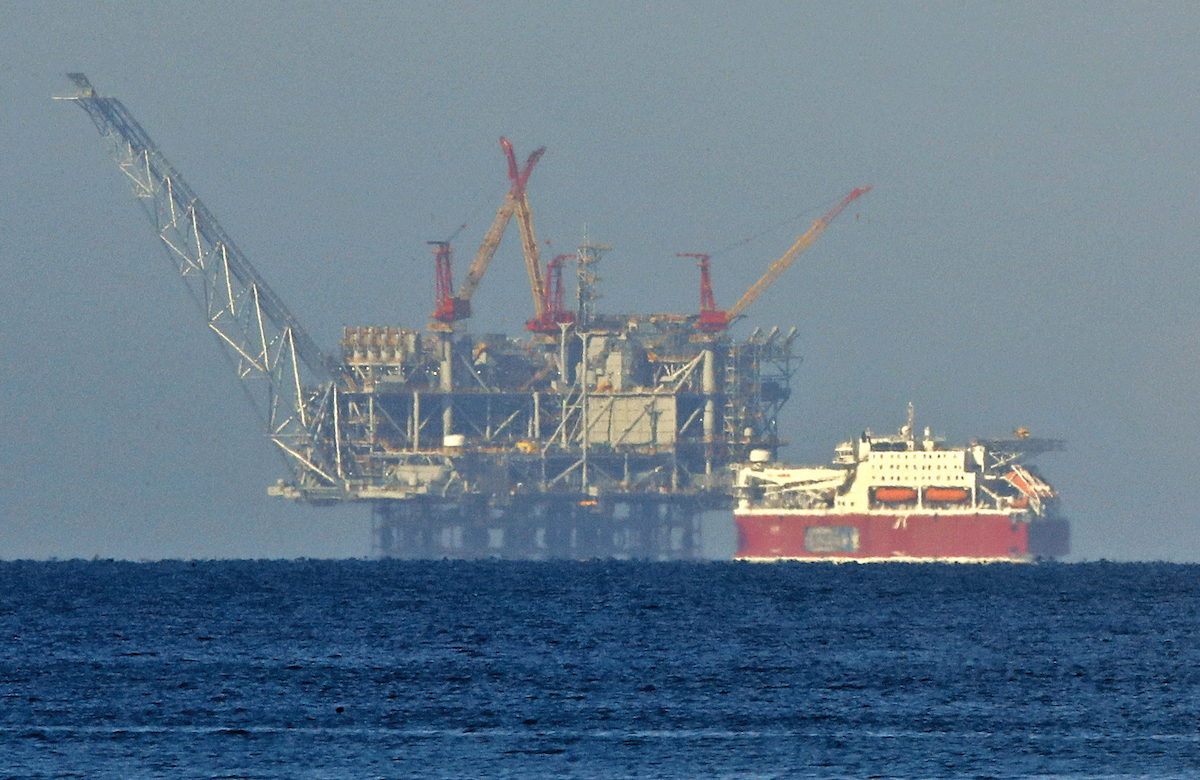After hostilities started on May 10 between the Israeli army and groups operating in Gaza, on May 20, Israel's narrow military-political cabinet at a special meeting approved a ceasefire. The Gaza war has seen thousands of missiles fired at Israel, the bulk of which have been shot down by Israel’s Iron Dome air defense system. But Hamas “terrorists” – which is how the US government defines them – have also deployed some new sea-going weapons that have the attention of Israeli intelligence, Asia Times writes.
These weapons are of three types – commando underwater swimmers using swimmer vehicles that are used to smuggle weapons into Gaza and for commando operations; semi-autonomous small boats stuffed with explosives and; the latest, a large unmanned underwater vehicle, or UUV. A Hamas unmanned submarine was destroyed just after launch by the Israeli Air force and Navy. In a video supplied by the Israel Defense Forces (IDF), one segment shows the blast that destroyed the UUV. Another shows a small white car escaping after the UUV is destroyed. The car was also hit by a blast and the operators in the car were killed. There is at least one photo of the destroyed car. The UUV was sent out to attack Israeli targets, most likely the offshore Tamar Natural Gas rig, which is fed by five subsea wells. Because of the Gaza war, all of Israel’s offshore platforms have been shut down.
Hamas had been trying to hit the Tamar rig with rockets, but the projectiles lack the accuracy required to hit such a target. Hamas has also launched more accurate drones to do the job. So far the Israel Air force has shot down at least two of the drones using Python 5 air-to-air missiles. A third was destroyed by the Iron Dome air defense system.
The main mystery is where did the UUV come from? According to the Israeli press, which has been tipped by the IDF, the UUV was a fairly large commercial vehicle that had been converted for military use. The IDF pointed out that the UUV was large and was towed to the launch site. It carried 30 to 50 kilograms of explosives – probably not enough to topple an oil platform, but enough to cause major anxiety and secure a psychological victory. The Tamar platform may not have been the only target and, as of now, it isn’t known if Hamas has any more UUVs in its arsenal.

Commercial UUVs are produced in many countries. Commercial applications include seabed mapping, pipeline and subsea structure inspection, oceanographic surveys, environmental monitoring, marine geological surveys and search operations. But commercial UUVs and military UUVs are very much alike. Military UUVs can be weaponized in various ways, including to plant deep water mines, launch torpedoes and missiles and for suicide operations. The Gaza UUV was intended as a suicide one-time weapon.
While the press has reported that the Hamas UUV was autonomous, this does not appear to be correct. The Hamas operators were likely controlling the UUV from onshore. Hamas had been pursuing unmanned vehicles, air and sea, for some time. The Ababeel1 drone, first used in Gaza in 2014, was designed by Mohamed Zouari, a Tunisian aerospace engineer who worked for Hamas’ Izz ad-Din al-Qassam Brigades military wing. Zouari did his design work in Sfax, Tunisia, where the drone was manufactured and later shared with Iran. Zouari was also known to be working on UUVs. He was assassinated in Sfax on December 15, 2016.
Hamas UAVs and UUVs are essentially first-generation systems that require a man in the loop. But that may soon change. Iran already has a large fully autonomous UUV. When Iran struck Saudi Arabia’s oil installations at Khurais and Abqaiq in September 2019, it used home-built cruise missiles and drones. The drones were Iranian delta-wing unmanned aerial vehicles – so far unnamed.
What marks them as different is that they appear to operate in a truly autonomous manner and probably have scene-matching technology, enabling them to hit targets with great accuracy. Because Hamas is primarily fed weapons from Iran, it won’t be long before Hamas acquires far more accurate UAVs and, perhaps, autonomous UUVs as well. For the record, Iran has not acknowledged it attacked Saudi Arabia in 2019. However, the trajectory of the weapons indicates they were either fired from Iranian territory or from Iraq in the northern border area. Officially, the rebel Houthis in Yemen took credit for the attacks. The evolving threat from Gaza no doubt concerns Israel’s military to the extent that there is considerable pressure to totally defang Hamas. Whether that can be achieved without a full occupation of Gaza is far from certain.
A new challenge
The use of UUVs will no doubt proliferate in the future. This means that coastal areas, offshore platforms and naval vessels – military and civilian – will be increasingly subject to attack. No state can afford to have surveillance and attack aircraft and anti-submarine warfare (ASW) ships operating around sensitive targets on a full-time basis. Oil terminals, refineries, military ports, power plants, offshore platforms and other sensitive installations will be increasingly vulnerable if early-warning sensors and physical barriers are not put in place.
Significantly, UUVs can be carried on fishing boats and commercial sea transporters and dropped into the water near their targets. In late April 2021, a remotely piloted boat packed with explosives targeted the Saudi port of Yanbu in the Red Sea. This was quite far from Houthi territory and the unmanned boat may have been dropped off by a larger vessel in the Red Sea. Yanbu is 300 kilometers northwest of Jeddah and is an important Saudi oil port. The Houthis have used unmanned boats for many attacks in the past five years. In February 2017, the Houthis used an unmanned suicide boat against the Saudi frigate Al Madinah.
Iran also has carried out attacks apparently using UUVs. On May 12, 2019, four oil tankers – two Saudi, one Norwegian and one UAE – were attacked while anchored off the Port of Fujairah in the UAE. According to one report, the attacks were done with a UUV called the Azhdar (“Dragon”). The Azhdar looks like an elongated torpedo – it is 8 meters long – but is much slower than a conventional torpedo. It is regarded as extremely stealthy and quiet and can loiter for up to 24 hours and can carry 200 kilograms of explosives. It is battery-powered. These threats and developments mean that Israel will see the need for new homeland security protection, particularly high-resolution sensors that can pick up UUVs. An Israeli company, DSIT Solutions, has developed a product called AquaShield, a high-performance Diver Detection Sonar (DDS) system.
High-value coastal assets
It is designed to provide permanent underwater security for high-value coastal and offshore assets such as naval bases, ports, oil and gas terminals, offshore platforms, underwater pipelines and cables, nuclear power facilities and canals. For surface security, there are a number of radar solutions optimized to pick up small seagoing vessels and semi-submersibles such as those used by cartel drug dealers in the Caribbean and Pacific for smuggling purposes.
For platform and harbor protection, even the classic underwater security net has been upgraded with fiber optics and can be integrated with sonar detectors. As UUV and unmanned surface vehicles proliferate, the protection of facilities will increase in importance, particularly in vulnerable areas in East and South Asia. What is clear is that the rise of unmanned air, land and naval vehicles is creating complex threats that will need to be countered. Not only will such threats proliferate, but they will increase in both capability and sophistication.






